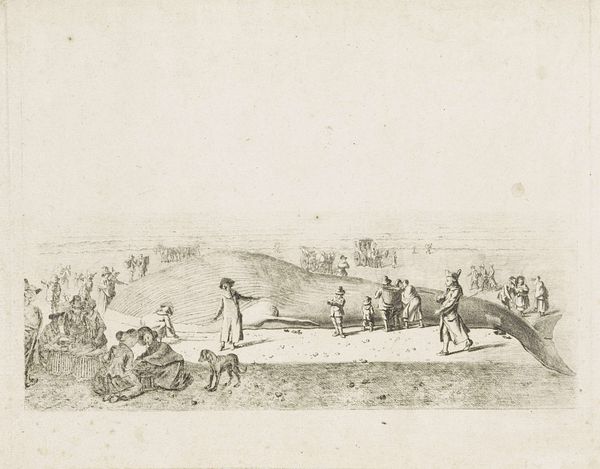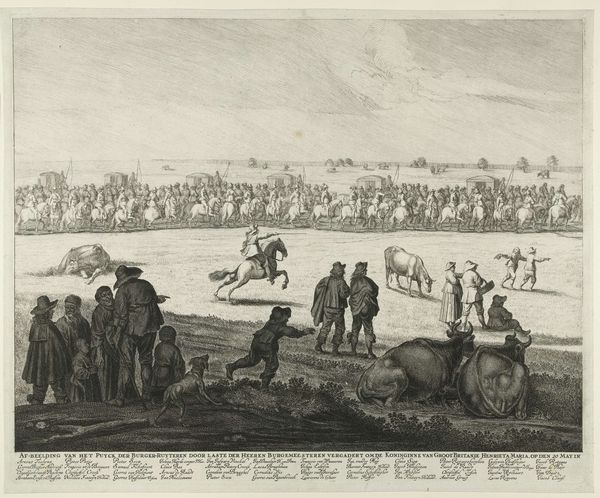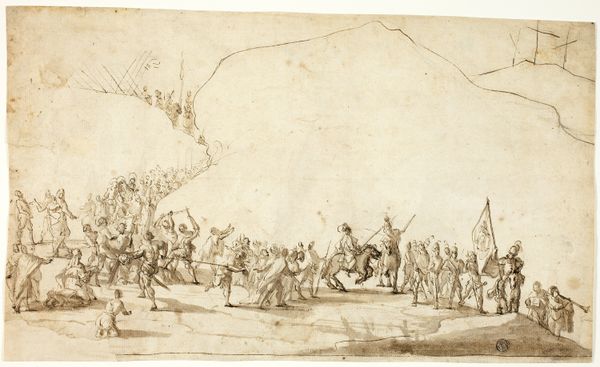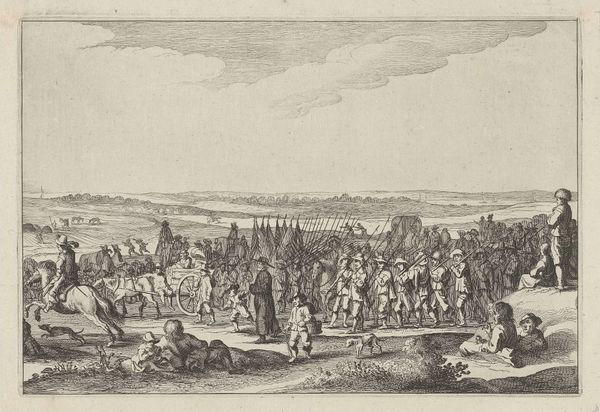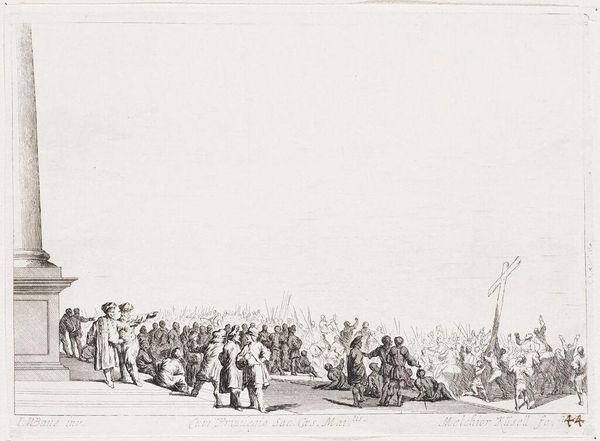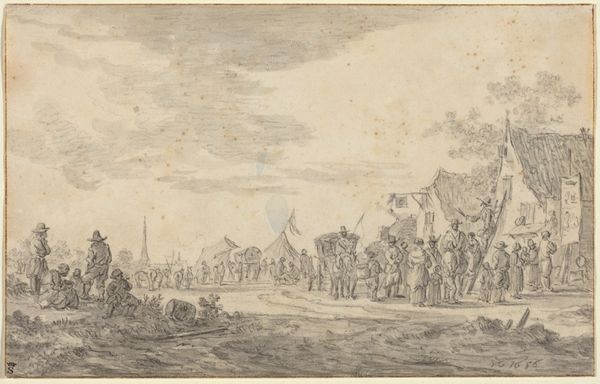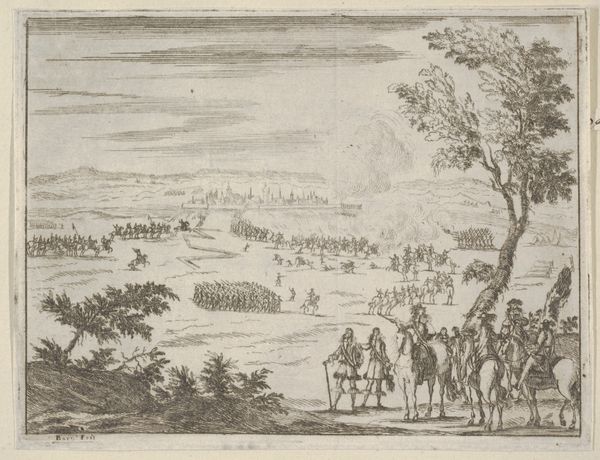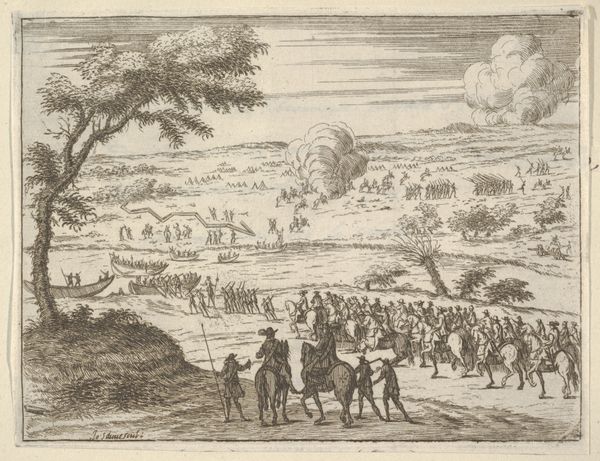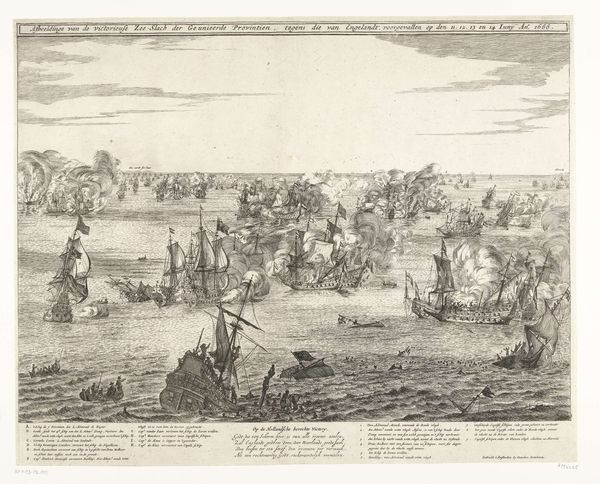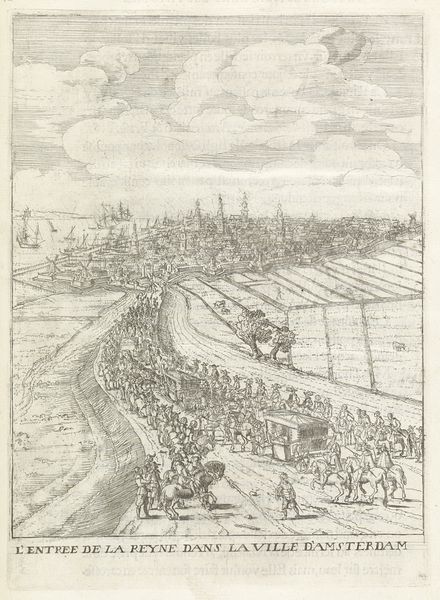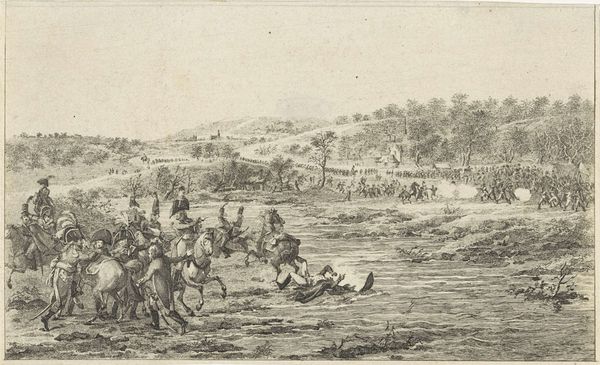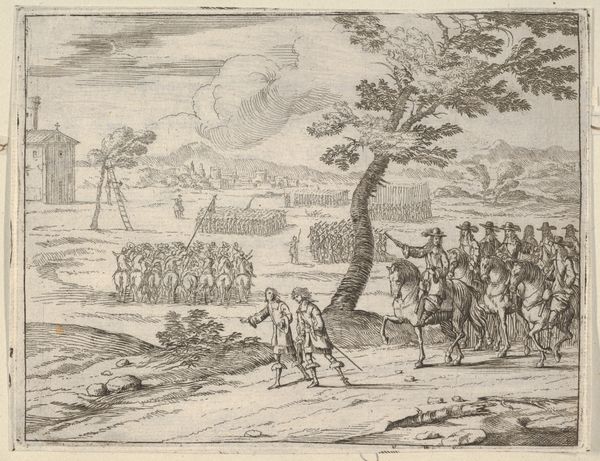
Uittocht van het Spaanse Garnizoen na de inneming van Hulst, op 5 November 1645 1645 - 1646
0:00
0:00
janmartszendejonge
Rijksmuseum
drawing, pencil
#
drawing
#
amateur sketch
#
aged paper
#
toned paper
#
light pencil work
#
baroque
#
dutch-golden-age
#
pencil sketch
#
incomplete sketchy
#
landscape
#
figuration
#
personal sketchbook
#
pen-ink sketch
#
pencil
#
sketchbook drawing
#
history-painting
#
sketchbook art
#
realism
Dimensions: height 197 mm, width 291 mm
Copyright: Rijks Museum: Open Domain
Curator: This pencil drawing, entitled "Uittocht van het Spaanse Garnizoen na de inneming van Hulst, op 5 November 1645," depicts a specific historical moment, created by Jan Martszen de Jonge sometime between 1645 and 1646. It resides here at the Rijksmuseum. Editor: My first impression is of a procession, or rather a forced departure. The light pencil work and open landscape convey a sense of vulnerability and displacement. There is so much grey tonality; the landscape is barely rendered and very austere. Curator: Indeed, it portrays the Spanish garrison leaving Hulst after the city's capture. Given the Eighty Years’ War and the rise of Dutch nationalism, this image is inherently charged. It frames the Spanish departure through the lens of Dutch triumph. Editor: Triumph, perhaps, but it is muted. Consider the visual language—the stoicism in the figures, their somber dress and faces. I see the iconic images of defeat and occupation recurring. And, there's even the image of a mother and child being forcibly removed. It certainly makes it more relatable. Curator: Absolutely, and these details provide an interesting viewpoint. Consider the artist, Jan Martszen de Jonge, working in the Baroque style, but with a documentary eye. His sketch offers not a glorification of war, but an understated record of power changing hands. It's social history in visual form. It is fascinating to understand whose view point this artist is trying to depict; if the intent of the artwork is a celebratory or simply the "news". Editor: This approach allows us to view history through the lived experiences of the represented figures. While de Jonge aimed to record a specific event, he inadvertently captures broader themes of displacement, resilience, and the cyclical nature of conflict as images get transported and remembered through history. Curator: A potent reminder of the complex, intertwined narratives embedded within seemingly simple drawings. Editor: An understated narrative filled with powerful and lasting imagery.
Comments
No comments
Be the first to comment and join the conversation on the ultimate creative platform.
